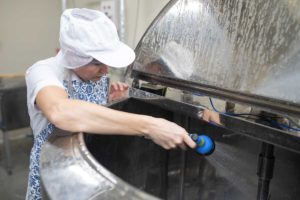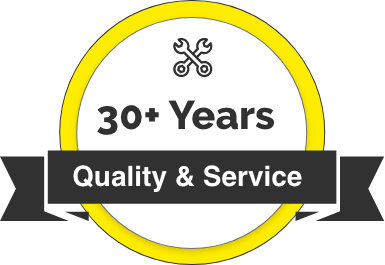 One advantage of COP is that it allows for a more thorough and detailed cleaning of the equipment. Because the equipment can be disassembled and each part can be cleaned individually, it is easier to access hard-to-reach areas and ensure that every part of the equipment is clean. Additionally, because the cleaning is done at a dedicated cleaning station, it is easier to control the environment and use specialized cleaning agents that may not be safe to use in the equipment’s normal operating environment.
However, COP also has some disadvantages. One major disadvantage is that it can be time-consuming and labor-intensive. Because the equipment must be disassembled and transported to the cleaning station, the process can take longer than other cleaning methods. Additionally, because the equipment is disassembled, it must be carefully reassembled after cleaning, which can also add to the time and labor required.
Cleaning in place, or CIP, is another method of cleaning industrial equipment and machinery. Unlike COP, CIP involves cleaning the equipment while it is still in its usual location. This method uses specialized cleaning equipment and agents to clean the equipment without having to disassemble it.
CIP typically involves using spray nozzles and other devices to apply the cleaning agents and circulate them throughout the equipment. This can be done manually, using handheld spray nozzles, or automatically, using specialized cleaning systems that are integrated into the equipment.
One advantage of CIP is that it is often faster and more efficient than COP. Because the equipment does not need to be disassembled and transported to a cleaning station, the cleaning process can be completed more quickly. Additionally, because the equipment is cleaned in situ, it can continue to operate during the cleaning process, reducing downtime and allowing for continuous production.
Another advantage of CIP is that it is often a more standardized and automated process. Because the cleaning equipment and agents are integrated into the equipment, the cleaning process can be more easily controlled and standardized. This can help to ensure consistent cleaning results and reduce the risk of human error.
However, CIP also has some disadvantages. One major disadvantage is that it may not be as thorough as COP. Because the equipment is not disassembled, it can be more difficult to access hard-to-reach areas and ensure that every part of the equipment is clean. Additionally, because the equipment is not removed from its operating environment, it may be more difficult to use certain cleaning agents that could be hazardous in that environment.
In conclusion, both COP and CIP are important methods for cleaning industrial equipment and machinery. While they both have their advantages and disadvantages,
One advantage of COP is that it allows for a more thorough and detailed cleaning of the equipment. Because the equipment can be disassembled and each part can be cleaned individually, it is easier to access hard-to-reach areas and ensure that every part of the equipment is clean. Additionally, because the cleaning is done at a dedicated cleaning station, it is easier to control the environment and use specialized cleaning agents that may not be safe to use in the equipment’s normal operating environment.
However, COP also has some disadvantages. One major disadvantage is that it can be time-consuming and labor-intensive. Because the equipment must be disassembled and transported to the cleaning station, the process can take longer than other cleaning methods. Additionally, because the equipment is disassembled, it must be carefully reassembled after cleaning, which can also add to the time and labor required.
Cleaning in place, or CIP, is another method of cleaning industrial equipment and machinery. Unlike COP, CIP involves cleaning the equipment while it is still in its usual location. This method uses specialized cleaning equipment and agents to clean the equipment without having to disassemble it.
CIP typically involves using spray nozzles and other devices to apply the cleaning agents and circulate them throughout the equipment. This can be done manually, using handheld spray nozzles, or automatically, using specialized cleaning systems that are integrated into the equipment.
One advantage of CIP is that it is often faster and more efficient than COP. Because the equipment does not need to be disassembled and transported to a cleaning station, the cleaning process can be completed more quickly. Additionally, because the equipment is cleaned in situ, it can continue to operate during the cleaning process, reducing downtime and allowing for continuous production.
Another advantage of CIP is that it is often a more standardized and automated process. Because the cleaning equipment and agents are integrated into the equipment, the cleaning process can be more easily controlled and standardized. This can help to ensure consistent cleaning results and reduce the risk of human error.
However, CIP also has some disadvantages. One major disadvantage is that it may not be as thorough as COP. Because the equipment is not disassembled, it can be more difficult to access hard-to-reach areas and ensure that every part of the equipment is clean. Additionally, because the equipment is not removed from its operating environment, it may be more difficult to use certain cleaning agents that could be hazardous in that environment.
In conclusion, both COP and CIP are important methods for cleaning industrial equipment and machinery. While they both have their advantages and disadvantages,

Sign up for newsletter and recieve updates on new products, specials, and news.

